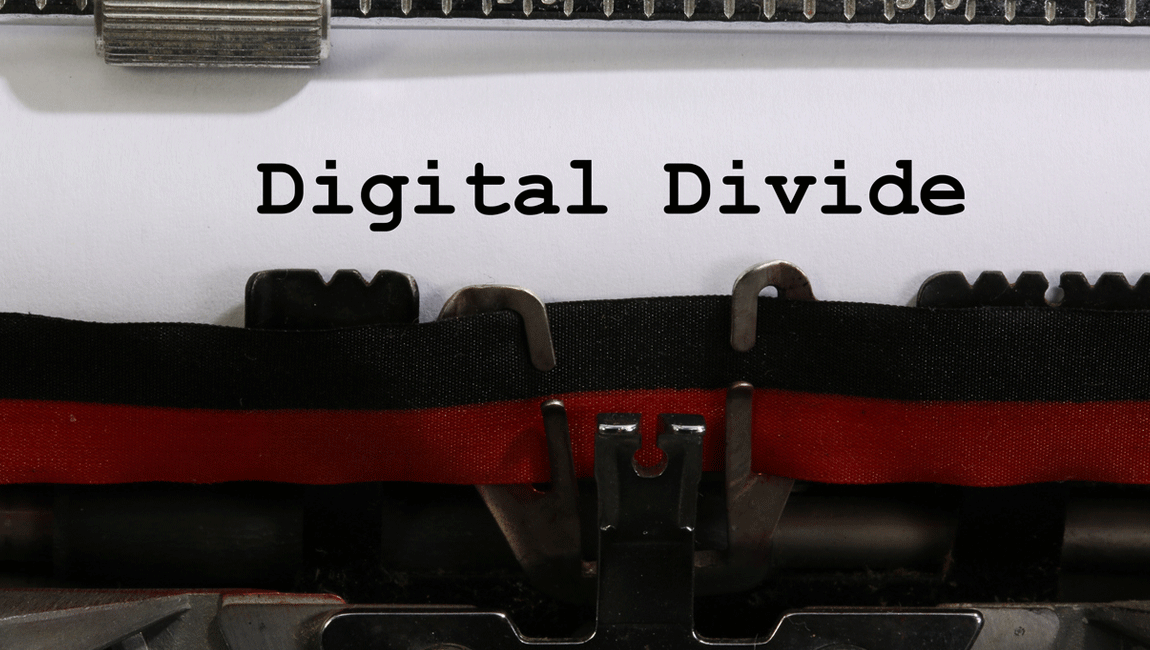Digital Divide: human rights at stake

Though the Internet and global connectivity have come to define our contemporary era, the digital divide still persists.
Coined in the late 20th century, the term “digital divide” is defined by Investopedia as “the gap between demographics and regions that have access to modern information and communications technology and those that don’t.” Though such technologies once seemed reserved for certain sectors or socioeconomic groups, increasingly, they have become necessities across educational and ethnographic lines. In a world that demands connectivity for work, education, information dissemination, and sustainable development, Internet access should be considered a human right, and the digital divide a social justice issue.
Impacts of the digital divide
Some 3.7 billion people – that’s almost half of the world’s population – still live without Internet access. A significant portion of people affected by the digital divide are women in developing countries, further compounding the issue and presenting obstacles to advancement. Studies have found that low-income citizens, residents of rural areas, the elderly and people of color are also disproportionately affected.
“In a world of unparalleled innovation, where our loved ones are but a video call away, billions struggle to access even the most basic elements of connectivity or live with none at all,” Volkan Bozkir, United Nations General Assembly President, declared last spring. “Truly, for billions of people the pace and scale of sustainable development is reliant upon digital connectivity.”
The digital divide existed long before the Covid-19 pandemic began, but the gap has been exacerbated by the public health crisis. Shifts to remote work, digital socializing and safety nets, and virtual schooling were made difficult, if not impossible, for those without reliable access to an Internet connection. In dealing with the aftereffects of the pandemic, Bozkir says that the UN’s Sustainable Development Goals should be used as guideposts, which will require “ensuring no one is left offline, and that we apply a whole-of-society, multi-stakeholder, and intergenerational approach to our efforts.”
Closing the digital divide
Some experts stress that reducing the digital divide should not be seen as a basic policy or infrastructure issue. Instead, a holistic approach will be required. Cynthia K. Sanders is a professor in the College of Social Work at Boise State University, and co-author, with Edward Scanlon, of the 2021 study “The Digital Divide is a Human Rights Issue: Advancing Social Inclusion Through Social Work Advocacy,” published in the Journal of Human Rights and Social Work. Sanders, with the United States as her frame of reference, stresses that making broadband more widely available is not enough, on its own, to close the digital divide.
Even when broadband is accessible, not everyone can afford it or the devices required to use it. Even those that can, Sanders says, “may not have the digital literacy skillset to effectively use technology and broadband for many of the opportunities it provides like applying for jobs, furthering one’s education, accessing health care or medical records and staying in touch with friends and family.”
High-speed internet access is a human right
The digital divide is a human rights issue, not a mere inconvenience. But closing the digital divide is a complex endeavor that will require international collaboration, as no single nation, government, or corporation can – nor should – oversee universal connectivity. As the UN’s Deputy Secretary-General Amina Mohammed told the UN General Assembly, “Now more than ever, we need a global townhall to address these issues and to capitalise on technology’s transformational potential to create new jobs, boost financial inclusion, close the gender gap, spur a green recovery and redesign our cities.”





